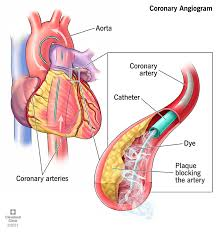The nurse is providing discharge teaching to a client newly diagnosed with hypertension. Which food item(s) should the nurse instruct the client to avoid in order to assist In controlling the blood pressure? (SELECT ALL THAT APPLY)
Packaged meats such as salami and bacon
Grapefruit juice
Canned soups
Fresh fruits
Fresh shellfish
Correct Answer : A,B,C
Choice A reason:
Packaged meats, including salami and bacon, are typically high in sodium, which can contribute to increased blood pressure. The American Heart Association recommends that individuals with hypertension limit their sodium intake to no more than 2,300 milligrams per day, with an ideal limit of no more than 1,500 milligrams for most adults². Since packaged meats are often cured with salt, they can significantly contribute to the daily sodium intake, potentially exacerbating hypertension.
Choice B reason:
Grapefruit juice can interact with certain antihypertensive medications, potentially leading to higher levels of the medication in the bloodstream and an increased risk of side effects¹. This interaction occurs because grapefruit juice can inhibit the action of an enzyme that metabolizes medication, leading to an unintended increase in medication levels.
Choice C reason:
Canned soups are often high in sodium, which can contribute to increased blood pressure. Even low-sodium varieties can still contain significant amounts of sodium. It's important for individuals with hypertension to read labels carefully and choose options with the lowest sodium content possible².
Choice D reason:
Fresh fruits are generally recommended for individuals with hypertension. They are rich in potassium, which can help lower blood pressure by balancing out the negative effects of sodium and easing tension in the blood vessel walls¹. Fresh fruits should not be avoided unless there is a specific reason related to another health condition or medication interaction.
Choice E reason:
Fresh shellfish, like fresh fruits, are typically safe for individuals with hypertension to consume. They provide essential nutrients without the added sodium that is found in processed foods. However, it's important to consume them in moderation and to prepare them without adding excessive salt or high-sodium sauces.
Nursing Test Bank
Naxlex Comprehensive Predictor Exams
Related Questions
Correct Answer is A
Explanation
Choice a reason:
A history of allergy to iodine is a critical finding to report before a coronary angiography because the contrast dye used in the procedure typically contains iodine. Patients with an iodine allergy may experience severe reactions, including anaphylaxis, which can be life-threatening. Precautions such as premedication with steroids and antihistamines or the use of alternative contrast agents may be necessary.
Choice b reason:
A serum potassium level of 4.0 mEq/L is within the normal range, which is approximately 3.5 to 5.2 mEq/L for adults. Therefore, this finding is not significant and does not need to be reported to the healthcare provider prior to the procedure.
Choice c reason:
A blood pressure reading of 138/90 mmHg is slightly elevated but does not reach the threshold for stage 1 hypertension, which starts at 140/90 mmHg for individuals under 60 years of age. While it should be monitored, it is not an urgent concern that needs to be reported immediately before a coronary angiography unless the patient shows symptoms of hypertensive crisis.
Choice d reason:
An EKG showing atrial fibrillation is an important finding; however, it is not typically a contraindication for coronary angiography unless the patient is hemodynamically unstable or symptomatic. Atrial fibrillation can increase the risk of stroke, but anticoagulation management is usually the focus rather than postponing necessary diagnostic procedures.

Correct Answer is C
Explanation
Choice A Reason
Providing a quiet atmosphere for undisturbed sleep is beneficial for all patients, especially those recovering from illness. However, it does not directly address the issue of activity intolerance. Adequate rest is important, but the primary concern with activity intolerance is managing energy levels during waking hours to improve the patient's ability to engage in activities.
Choice B Reason
Clustering activities in the morning may seem like a good strategy when the patient is well-rested. However, this could lead to rapid depletion of energy reserves and exacerbate activity intolerance. It is more effective to spread activities throughout the day to manage energy levels better.
Choice C Reason
Identifying ways to conserve energy is a key intervention for managing activity intolerance. This can include teaching the patient energy-conservation techniques, such as sitting while showering or dressing, taking frequent breaks, and prioritizing tasks. This approach helps patients with folic acid deficiency anemia to participate in activities without excessive fatigue.
Choice D Reason
While nutrition is important in the management of anemia, recommending small frequent iron-rich meals does not directly address activity intolerance. Folic acid deficiency anemia requires dietary intake of folate-rich foods or supplements. Iron is important, but the focus for folic acid deficiency should be on folate.
Whether you are a student looking to ace your exams or a practicing nurse seeking to enhance your expertise , our nursing education contents will empower you with the confidence and competence to make a difference in the lives of patients and become a respected leader in the healthcare field.
Visit Naxlex, invest in your future and unlock endless possibilities with our unparalleled nursing education contents today
Report Wrong Answer on the Current Question
Do you disagree with the answer? If yes, what is your expected answer? Explain.
Kindly be descriptive with the issue you are facing.
